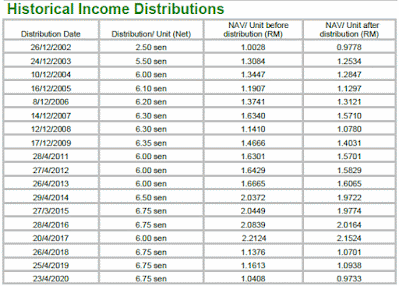158 Do I prefer single country funds or regional funds?
In short, single country funds.
Why?
1. Easier to monitor. Each country has an index, easier to track the index of a single country. Example, track STI for Singapore funds, JKSE for Indonesia funds. If, example, you see an index drop, you know you can get cheaper fund price if you want to take advantage to do dollar cost averaging.
2. Easier to predict the closing price trend of the fund. Overseas funds' fund price normally come in 2 days later, so easier to track the index and predict the price trend. When you need to do switching or redemption, you can know you'll get a higher or lower price by seeing the index. You may not know the actual price, but knowing it is higher or lower than now.
3. The underlying asset is within a single country only. If a fund is Singapore fund, majority of the fund will be in Singapore. You know you won't order a durian but it become apple. I once bought a Far East fund with most of its investment in China, Japan etc.; but who knows few years later its allocation became majority in Malaysia.
4. Regional funds may invest in countries I don't favour or duplicated in my portfolio. Example, an Asia Pacific fund may invest in Japan and it could happened I may think Japan market is over-priced. Or an Emerging Market fund may invest quite a lot in China while I may already have China funds.
That said, the pre-conditions are:-
1. Capital. If I have enough capital to manually select the countries. If I only have few thousands, then maybe a regional fund.
2. No other choices. Two situations: First, example is I may want to invest in Thailand but there is no such fund in Malaysia, so I may use ASEAN fund that overweight Thailand. Second is let's say I may want a single country fund but it's not approved under EPf investment scheme, I may need to look for regional fund.
158 我比较喜欢单一国家型基金还是区域型基金呢?
简单一句,是单一国家型基金。
为何?
1. 容易追踪。每个国家有自己的指数,那追踪单一指数容易过追踪一揽子指数。例如,新加坡基金就追踪海峡指数、印尼基金就追踪雅加达综合指数。若是看到某个指数大跌,就晓得基金报价也会变得便宜,这就容易进行摊平啦。
2. 比较容易预测基金的报价趋势。国外基金的报价通常会迟两天报出,所以比较容易追踪指数并预测报价趋势。当我们有意进行基金转换或是赎回,看单一指数就可以大约知道可以以更高或是更低的价位交易。当然无法知道真正的价位,而是知道更高或更低。区域型基金因牵涉多个指数,比较难预测整体的高低。
3. 基金后边的真实投资仅在一个国家罢了。新加坡基金顾名思义绝大部分投资在新加坡。买的是榴莲绝不会收到苹果的意思。我曾买过远东基金(投资于中国、日本等)但几年后发觉绝大部分竟然投资在马来西亚!
4. 区域型基金或许会投资于我不喜欢的国家或是重复的国家。例如,亚太平洋基金可能投资在日本而我可能觉得日本市场已经过热。抑或新兴市场基金可能投资于中国,而我已经另外有中国基金了。
当然,先决条件如下:-
1. 资本。如果我有足够的资本,就自行配置。如果只有区区几千元,可能就买区域型基金吧。
2. 别无选择。两个:其一,比如我想投资泰国而本地没有泰国基金,那可能就选侧重泰国的亚细安基金;其二,如果我要的单一国家型基金不开放于公积金投资,那只好屈就于类似的区域型基金。


















